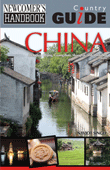Newcomers Handbook to China
By Navjot Singh
Summary: Modernism and traditionalism, communism and capitalism – all seem to be living comfortably side by side. It's amazing how the Chinese have achieved this as it certainly is not an easy mix to deal with.
The initial misconceptions that many people have of China are of people dressed in traditional Chinese costumes, busy streets filled with bicycles, men wearing pointy straw hats while pulling tricycles with their hands, men with shaved foreheads and long ponytails, and women with long silky hair wearing beautiful dresses. In reality, it's not quite as you would have imagined! These days, a first-time visitor to China would be somewhat disappointed to know that most of these ancient stereotypical traditions of Chinese culture are to be seen in museums, Hollywood movies, or Chinese soap operas shown on state-owned television channels.
New arrivals into the country will also be taken aback at how surprisingly modern China has become. Though still years behind other Asian developing countries such as Singapore, Japan, or South Korea in terms of infrastructure and cultural outlook, it is, however, catching up rapidly with Western economies.
My interests with China grow each time I even think about the country. It's almost as if the country's culture itself has become part of my life and DNA. The concept of writing a unique travel guide to the "Middle Kingdom" initially started off with an informal meeting with the Director of the China National Tourist Office (CNTO) in London.
A developing country that is no longer just the most populous in the world, 21st-century China is firmly placed on a fast track to being the largest trading power on the globe and among the top three world economies. Many economic pundits are predicting that China's economy is set to overtake that of the USA by around 2050 and will continue to dominate the global economic scene. Above all else, moving away from the economic and political topics, China is also a very beautiful and romantic country.
Whatever differences China has had with its rivals in the past, these days no country wants to make enemies with her because the whole world is now enmeshed with China, politically and economically, as never before. Proof of this exists through the country's major cities, where foreign investment thrives on a massive scale. Two things strike a first-time visitor to China, the first being the massive population density and the other the amount of construction going on. "It looks like a huge building site" was what I thought when I first arrived here (and it still does and will continue to do so for a number of years), and at one time it was reported that roughly 60% of the world's cranes were in Shanghai alone! China is not just urbanizing, it is globalizing. Little more than a generation ago, this was a country where Red Guards in Mao suits chanted anti-imperialist slogans. Today, young people with money dress much like their counterparts in Hong Kong, New York, London, or Paris.
The People's Republic of China (along with Vietnam, North Korea, Laos, and Cuba) is one of the five remaining Communist states in the world.Before the early 1980s there was no advertising on the streets or in other forms of media, there were very few cars on the roads (if you had a car you were considered a millionaire or even a billionaire!), and everyone wore navy blue Mao suits with Mao caps (including children and women).
So what do we have now? A country that has an endless hunger for modern cars, planes, trains, advertising, and fashion. China is a country of extremes. The world's most populous nation; the world's fastest-growing major economy; the world's biggest exporter. It has the world's longest sea bridge, the world's fastest train, and is the world's biggest market for cars. The list goes on and on. And its record-breaking ways look like they are set to continue for a while yet. The country's big cities dazzle when night falls. Multi-colored illuminations light up everything from the housing blocks that rise up on the hillsides to the giant city center replicas of the Empire State Building. Motorway crash barriers glow pink, blue, green, and purple. This is the scene all around the country.
Take that last point. In the mid-1980s the country only produced a few thousand cars and hardly anyone actually owned one. Now, it is the world's largest producer of cars and the world's largest consumer. Last year, 18 million vehicles were sold, dwarfing the 12.7 million sold in the US. And this sudden explosion has meant a massive rise in one thing: traffic.
There are too many cars on the streets, too many planes (and too many airlines), people are wearing the latest designer clothes, an increasing number of Chinese people go on holiday abroad, and there is an abundance of advertising everywhere, marketing everything ranging from the latest electronic goods to the latest coffee being offered at Starbucks (yes, coffee being sold in China – no longer mission impossible!). Modernism and traditionalism, communism and capitalism – all seem to be living comfortably side by side. It's amazing how the Chinese have achieved this as it certainly is not an easy mix to deal with. The Chinese people are proud to be making history by contributing to the economic growth, and this emerging market has become a role model and a prime example for other developing nations to look up to.
The country's hosting of the Beijing Olympics in 2008 made the future for this country look even better in terms of attracting direct foreign investment from a variety of industry sectors. Because of this attraction in various industries, China has at the same time drawn a considerable number of expatriates who have made China their second home. On October 1, 2009, China celebrated 60 years of Communist rule with an extravagant military display laid across Tiananmen Square. No country in history has seen such rapid economic growth in its culture, infrastructure, and environment in such a short period of time as China has. The objective of this book is not to be a tourist guide but instead to provide an insight into Chinese life and a guide for expats who are planning on relocating to China for a job, for marriage, or for whatever other purposes that they may have.
A number of changes have occurred since the first edition of this book, namely with the increase of infrastructure in all the major cities. For example, there are more expats in China now than before the Olympics, every major city has a metro line network, and there are more buildings going up all the time. For most other countries normally the skyline and a city's infrastructure changes every decade or so, but for China this rapid change is happening almost every few months! For me it has been a privilege to witness the immense beauty and growth of this country at first hand and I hope that anyone who is coming to China for the first time to start a new life as an expat (for business or pleasure) will enjoy the benefits of living in this stunning nation, as I have done. I wish you a very pleasant stay in China and hope this book provides you with a smooth welcome.
About the Author
Navjot Singh, author of the 'Newcomers Handbook to China,' is a British writer, and photographer who first went to mainland China in 2003. Navjot has traveled to more than thirty-seven countries; and has lived and worked in four of them as an expat, including China where he has resided for over nine years, and where he continues to spend time.
Navjot contributes to various media applications on China, South-East Asia and Asia Pacific regions travel and business advice for expats. Although China, SE Asia and the Asia Pacific Regions remain special subjects close to Navjot's heart, he is actively engaged in writing projects throughout the world.
Navjot specializes in relocation issues, and is an expert on relocation, having been an expat himself in China, Hong Kong, and Switzerland for many years. Navjot's in depth knowledge of the issues affecting expats when they relocate to China comes across clearly in his book. When doing research for the book, Navjot not only lived an expat's life, however he fully immersed himself in the Chinese culture and way of living. In this way he got to experience what life is really like on the ground in China from an economic and cultural aspect.
The 1st edition of the ‘Newcomers Handbook to China' was published just prior to the Beijing 2008 Olympics. China has changed a lot since then- even though it seems like yesterday! So, now this completely revised and updated second edition of the ‘Newcomer's Handbook Country Guide: China' focuses on Beijing, Chengdu, Chongqing, Dalian, Guangzhou, Hangzhou, Nanjing, Qingdao, Shanghai, Shenzhen, Suzhou, Tianjin, and Wuxi, with additional information on Macau and Hong Kong. Its 420 pages detail issues relating to culture shock, communication, and what to bring, as well as essentials of Chinese history, housing, transportation, health care, and more. This volume is especially useful for an individual seeking employment in or transferred to China, stressing how to function in China's job market, especially the business and educational sectors.
Navjot was educated at Dulwich College; and later at Loughborough University where he graduated in with a combined Bachelors and Masters degree in Electronic and Software Engineering. He is fluent in spoken Mandarin. Navjot shares his hectic life between London, Guangzhou, and Shanghai.
Additional Information:
- China Guide
- Healthcare & Health Insurance in China
- Members Talk about Healthcare & Health Insurance in China
- Best Places to Live in China
- Real Estate in China
- Guide to Real Estate in China
- Pros & Cons of Living in China
- Cost of Living in China
- Best Places to Ski in China
- Having a Baby in China
- Health Insurance in China
- Best Places to Visit in China for Christmas Cheer
- 2024 Guide to Living in China
- Pros and Cons of Living in China 2024
- 2024 Guide to Moving to China

 China
China



